Marine Conservation Society’s aquaculture program manager says consumers need straightforward education about fish farming
 Dawn Purchase is a true hands-on type. The aquaculture program manager at the Marine Conservation Society in the United Kingdom is willing to do the dirty work at fish farming facilities whenever the opportunity arises, because the things you learn from workers on the ground level — the men and women plying their trade in the field — are things you can’t glean from a textbook or capture in a conference room.
Dawn Purchase is a true hands-on type. The aquaculture program manager at the Marine Conservation Society in the United Kingdom is willing to do the dirty work at fish farming facilities whenever the opportunity arises, because the things you learn from workers on the ground level — the men and women plying their trade in the field — are things you can’t glean from a textbook or capture in a conference room.
“Seeing it happen on a practical level you gain a really good understanding of how things actually work,” said the England native, who hails from Hertford, just outside of London. “I really love going out there and seeing fish farming in action.”
In a wide-ranging interview with the Advocate, Purchase applauds innovation (she will be a panelist on a discussion on innovation at the upcoming GOAL conference this fall in Guangzhou, China), decries food waste and gives us a look inside the Global Aquaculture Alliance’s Standards Oversight Committee. She also touches upon land-based fish farming, aquafeed production and retailers’ massive responsibilities in terms of sourcing environmentally and socially responsible goods.
Innovation is needed throughout the aquaculture sector. But what does innovation truly mean to you? Is it a new process, a new technology, or is it a mindset? How do you define it?
I define it in all those ways. To me, innovation is finding new processes and new technologies to farm familiar species; it’s finding new ways to tackle old problems; it’s looking at farming new species; it’s also looking out of the box, really, for ways to farm familiar species perhaps in ways we hadn’t thought. One of the things we’re seeing emerging in the U.K. is farming warm-water shrimp in land-based systems. That to me is a fantastic example of innovation. It’s all of those things, but it’s also finding new ways to market products to encourage diversity at the consumer level.
Are producers of seafood more engaged with what’s happening in the marketplace than they were in the past?
I think they are. I think they have to be. Seafood, more than any other cultured produce, has much more scrutiny at the market level. So I think producers are — maybe “forced” is the wrong word — much more mindful of the need to be engaged with what is happening at the market level.
Innovation will be needed to be able to produce fish further offshore in challenging environments without comprising on environmental performance and worker safety. I feel in the future further development and innovation in land-based production systems will be absolutely essential.
What are they finding there? Confusion? With consumers and with professional buyers as well, I assume. Retail buyers have a lot of responsibility.
That’s accurate. There’s a huge amount of confusion at every level, from seafood buyers to consumers. It’s a hugely complex market. To have a thorough understanding of both wild capture and aquaculture, for a buyer it requires a huge amount of knowledge and experience, and that’s just not possible for so many buyers. It’s a very very complex area, and when you even try to translate any of that understanding to a consumer level, it’s virtually impossible.
There’s many different issues, and these are global industries affected by everything from economics to politics; from environmental issues to markets; from different understandings of consumers; climate change; feed sustainability and ecosystem-based management of feed resources. Trying to have a handle on all of those issues, for a seafood buyer — much less a consumer — is a huge task.
Where is innovation most needed in aquaculture?
In production systems, I’d say. We have seen a huge amount of focus and investment in feed research at manufacturer and academic levels, which has provided us with a great deal of knowledge. As aquaculture growth is being limited by fish oil supply, it acts as a huge driver to invest in innovation in feed development. Innovation is already occurring: In production systems, there have been huge developments providing the ability to produce a variety fish and shellfish in different environments and areas. As aquaculture continues to grow, it is going to be constricted by the amount of inshore coastal area that we have for developing aquaculture, particularly in Scotland. Innovation will be needed to be able to produce fish further offshore in challenging environments without comprising on environmental performance and worker safety. I feel that in the future further development and innovation in land-based production systems will be absolutely essential.
What about the economic viability of land-based systems? Some environmental impacts are lessened by going on land, but the energy usage increases substantially.
It’s going to be very species-dependent. It’s currently economically viable for some species but not yet for others. This is a conversation that’s been had a lot around the salmon industry. There’s been a call by a number of NGOs to bring Atlantic salmon into land-based systems to address environmental problems. The push-back from the industry is always “it’s not economically viable.” At the moment that’s probably the case. There are some species that could support production in land-based systems, because they’ve got a high market value. It may well be in the future that some Atlantic salmon is produced in land-based systems in some areas, depending on the unit value of it and the associated cost of dealing with environmental challenges of open water production.
Going to your point on high energy usage, yes, land-based systems can have a very high energy usage, but there are solutions to that as well, such as combining land-based production systems with renewable energies. That’s going to have to be a key solution to aquaculture of the future. Land-based production is certainly not the only answer to the future of aquaculture, it’s just one of the solutions that are available to us and one that will become of increasing importance.
Which comes first, innovation or investment? Seems like a bit of a chicken-and-egg situation, in that there’d be more investor interest in the industry were there more innovation … but without the money, how do you experiment and grow?
Yes, that is a difficult one! I think what has to come first is innovation. With innovation, the finances are there, certainly through some of the research avenues, things like the BBSRC (Biotechnology and Biological Sciences Research Council) and NERC (Natural Environment Research Council) investing in research projects. Seeing pilot projects demonstrating innovation as a result of this funding — that’s what comes first. The next step is securing the investment to then ramp up into commercial production. Innovation comes first in enabling the development of a demonstrable method of addressing key concerns, production challenges or the production of a viable, quality and economically sound product, and that comes though research. The next challenge is to encourage investors to facilitate commercial-scale production.
You have to do the very best that you can and defining “best” is always going to be the challenge because everybody’s idea of “best” is different, depending on who you’re representing.
You are a judge for GAA’s Innovation & Leadership Award.
Yes, the award was an idea I proposed it at a [Standards and Oversight Committee] meeting.
Tell me what the panel of judges is looking for in a winner.
We are really looking for a kind of out-of-the-box, moving away from business-as-usual solution to an issue, problem or challenge that maybe has been ongoing for a while but needs a fresh set of eyes or a fresh idea that demonstrates best practices. The award is something we showcase to the rest of the aquaculture community to try and promote that thinking more widely. The idea behind the award was that GAA BAP certification demonstrates best practice at an everyday production level, the SOC continues to develop the standards to reflect best practice every time we review them, but I wanted a driver and a means of encouraging and capturing ideas from people out there who are looking at different ways, outside of certification, to address key environmental concerns.
This idea really comes from the experience I have had working in industry, including on aquaculture farms. I have seen and spoken to people on the ground who may not be at a director or manager level and are unlikely to attend the GOAL conferences, but they have come up with an innovative solution to a production problem that could be shared for the benefit of others, the award provides the opportunity to talk about it.
It’s a ground-root level kind of thinking: How do you transform innovation out of universities into commercial production? What is the driver for producers to embrace and adopt innovation? We see huge amounts of investment in research. How do you get that translated into commercial production, part when it might require investment?
Let me pose your question to you: How do you translate academics to on-the-water improvement?
I posed the question but I don’t know the best answer! I think you have to look at the key motivators and key drivers that affect people’s behavior. People either do it because it makes them more money, or because it’s easier, or because it addresses a problem they can’t already address or does so in a cheaper, faster, more efficient way. It comes back to the investment question: If there is an innovative solution, say, for dealing with sea lice or containment and it requires significant investment such as replacing all your nets — what’s going to be the driver to replace all of your nets, at a cost of tens of thousands of pounds, if your existing nets are already doing the job? It’s all kind of economies. It’s partly a role that NGOs have to play. Maybe it’s a matter of having these discussions publicly, and asking these questions back to the producers themselves.
You are also on the GAA’s Standards Oversight Committee. Take me inside the room: What goes on in those meetings? If there are disagreements on certain points, what are they usually about and how are they resolved?
We do disagree on specific points, these are resolved by having lengthy, robust discussions with everybody given the opportunity to air their viewpoint and to substantiate their point. It’s a very good group. Although we may disagree at times or having differing opinions, we work incredibly well together; it’s one of the most successful groups that I work in. We tend to differ on specific details or figures. Being in the room, a point will be raised, we will discuss the point with various people will put forward their particular thoughts and expertise, then we give as much time as needed to make sure everyone’s been heard. We have hours of discussions until we can reach a solution with which we are all comfortable.
Any particular standard that was difficult to reach consensus on?
The feed mill standard was a challenging one for us, trying to deal with an issue of feed sustainability, and responsible sourcing of feed across a whole range of species and different markets, and that’s incredibly difficult. If you’re looking at a feed mill standard for Atlantic salmon farming in Scotland and that same feed mill standard has to look at warm-water shrimp farming in Vietnam, trying to come up with a standard that demonstrates best practice and responsible sourcing for both is incredibly difficult. You’re always going to have different views. You have to do the very best that you can and defining “best” is always going to be the challenge because everybody’s idea of “best” is different, depending on who you’re representing. It’s not just a GAA/SOC issue, that’s a global issue facing everybody who’s working on feed sustainability and every group, NGO and everybody involved in the seafood supply chain trying to define responsible sourcing, best practices and key issues on global feed sustainability.
Editor’s note: Part 2 of the Dawn Purchase Aquaculture Exchange interview will be posted on Friday, May 13.
Now that you've reached the end of the article ...
… please consider supporting GSA’s mission to advance responsible seafood practices through education, advocacy and third-party assurances. The Advocate aims to document the evolution of responsible seafood practices and share the expansive knowledge of our vast network of contributors.
By becoming a Global Seafood Alliance member, you’re ensuring that all of the pre-competitive work we do through member benefits, resources and events can continue. Individual membership costs just $50 a year.
Not a GSA member? Join us.
Author
-
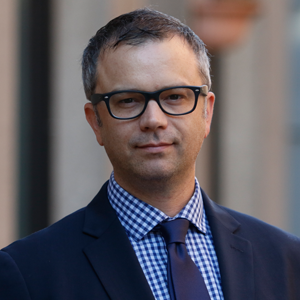
James Wright
Editorial Manager
Global Aquaculture Alliance
Portsmouth, NH, USA
Tagged With
Related Posts
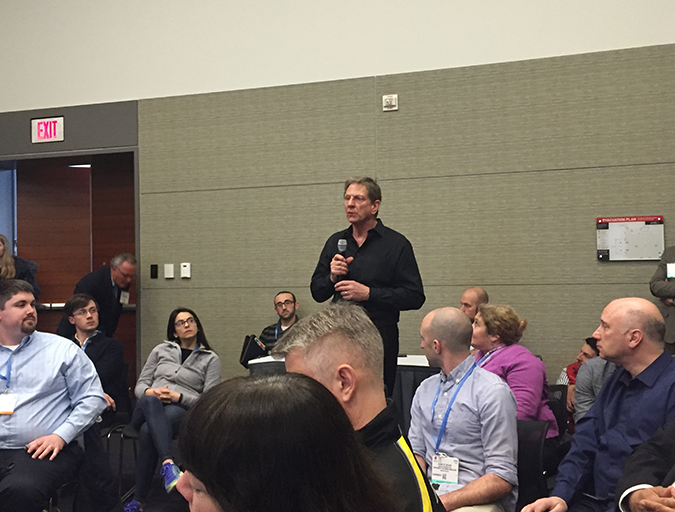
Intelligence
Boston brainstorm: Getting consumers to embrace aquaculture
In a discussion format somewhat unique to the bustling halls of Seafood Expo North America, aquaculture backers lamented the lackluster U.S. consumer acceptance for farmed fish.
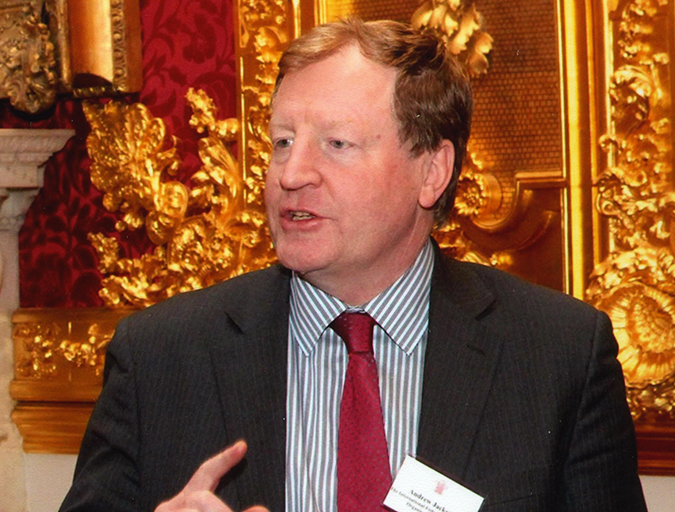
Aquafeeds
Aquaculture Exchange: Andrew Jackson, IFFO
Aquaculture remains dependent on fishmeal and fish oil, crucial marine ingredients in aquafeeds, particularly at key life stages. Andrew Jackson, technical director at IFFO and one of the world’s foremost fishmeal experts, tells the Advocate that the two industries can coexist well into the future if properly managed.
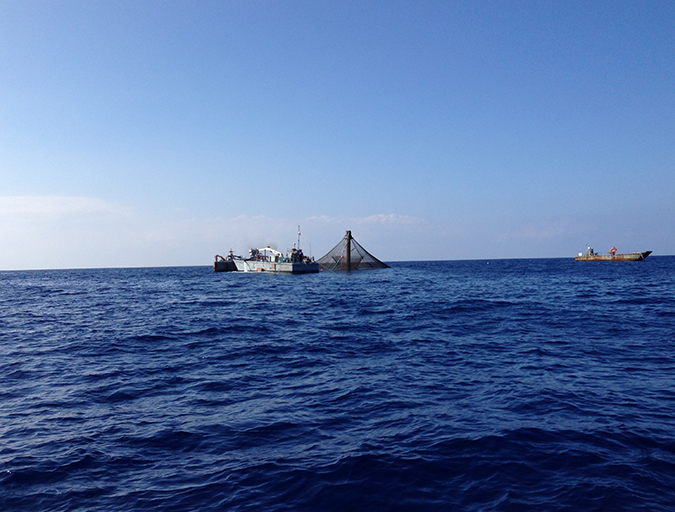
Intelligence
‘Spatiotemporal patterns’ indicate improving perceptions of aquaculture
A study led by University of California Santa Barbara researchers has found that public sentiment toward aquaculture improves over time, a potentially important development with growing interest in offshore aquaculture.
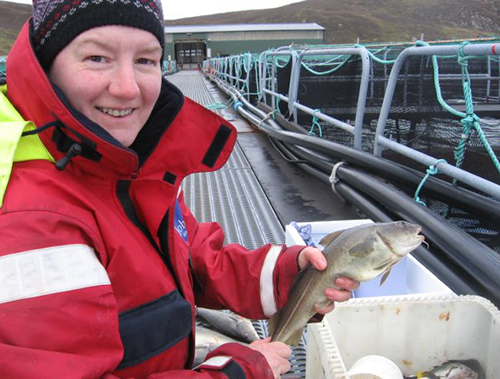
Innovation & Investment
Aquaculture Exchange: Dawn Purchase, part 2
The Marine Conservation Society’s aquaculture program manager discusses what consumers ultimately need to know about aquaculture, responsible production and eco-labels. She also looks at NGOs making a difference in the global seafood industry and where she finds innovation in action.


